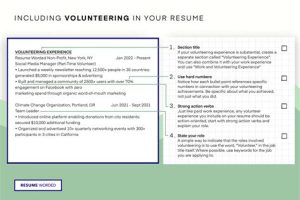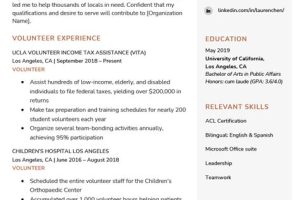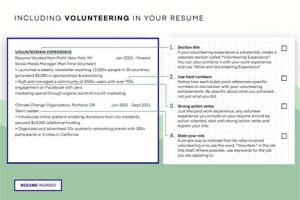Table of Contents
Discover the essential steps to structure a successful volunteer program. Learn how to define goals, recruit volunteers, create roles and responsibilities, provide training, and ensure effective communication. Build a strong foundation for your volunteer program and maximize its impact with these valuable insights.
Creating a well-structured volunteer program is essential for organizations seeking to make a meaningful impact in their communities. By establishing a clear framework and delineating specific roles and responsibilities, volunteers can effectively contribute their time and skills towards a common goal. Moreover, a structured volunteer program helps ensure that the efforts of volunteers align with the organization’s overall mission and vision. To achieve this, it is imperative to develop a comprehensive plan with clearly defined objectives, establish communication channels, and provide ongoing support and recognition for volunteers. In this article, we will delve into the key components of structuring a volunteer program, offering valuable insights and practical tips to help organizations maximize the potential of their dedicated volunteers.
Introduction
Volunteering is a noble act that not only benefits the community but also provides individuals with personal growth and fulfillment. If you’re considering creating a volunteer program, it’s crucial to establish a solid structure to ensure its success. This article will guide you through the key steps and considerations involved in structuring a volunteer program.
Identify Your Goals and Objectives
Before diving into the logistics of your volunteer program, it’s essential to identify the goals and objectives you wish to achieve. Clearly define what you hope to accomplish through the program and how it will benefit both the community and the volunteers themselves.
Assess Community Needs
To create an effective volunteer program, you must assess the needs of the community you aim to serve. Conduct thorough research to understand the challenges and issues they face. This will enable you to tailor your program to address those specific needs.
Recruit Volunteers
Once you have established the goals and identified the community’s needs, it’s time to recruit volunteers. Develop a recruitment strategy that includes outreach efforts, such as posting on social media, reaching out to local organizations, and utilizing existing networks. Clearly communicate the requirements and expectations for volunteers, ensuring they align with the goals of your program.
Create Volunteer Roles
To efficiently utilize the skills and interests of your volunteers, create specific roles within your program. Determine the tasks and responsibilities associated with each role and match them with the skills and preferences of your volunteers. This will enhance their engagement and ensure they are making a meaningful contribution.
Provide Training and Support
Training is crucial to equip volunteers with the necessary skills and knowledge to fulfill their roles effectively. Develop a comprehensive training program that covers the organization’s mission, policies, and procedures, as well as any specific skills required for the volunteer roles. Additionally, establish ongoing support mechanisms, such as regular check-ins and mentorship opportunities, to ensure volunteers feel supported throughout their journey.
Establish Clear Communication Channels
Effective communication is vital for the success of any volunteer program. Establish clear communication channels to keep volunteers informed about upcoming events, changes in schedules, and any relevant updates. Utilize technology tools, such as email, messaging apps, and online platforms, to facilitate seamless communication between volunteers and program coordinators.
Implement a Volunteer Management System
To streamline your volunteer program, consider implementing a volunteer management system. This software can help you track volunteer hours, manage schedules, and collect feedback from volunteers. It will also allow you to maintain a centralized database of volunteers, making it easier to communicate and engage with them.
Evaluate and Recognize Volunteers
Regularly evaluate the impact of your volunteer program and gather feedback from both volunteers and the community you serve. Use this information to make improvements and ensure the program remains aligned with its objectives. Additionally, recognize and appreciate the efforts of your volunteers through various means, such as certificates of appreciation, volunteer spotlights, or appreciation events. This will foster a positive volunteer experience and encourage long-term commitment.
Continuously Improve the Program
A volunteer program should be an ever-evolving entity. Continuously seek feedback, adapt to changing needs, and implement improvements based on lessons learned. Regularly assess the effectiveness of your program and make adjustments as necessary to ensure it remains impactful and sustainable.
Conclusion
Structuring a volunteer program requires careful planning and consideration. By identifying goals, recruiting volunteers, creating roles, providing support, and continuously improving the program, you can establish a successful and impactful volunteer program that makes a positive difference in the community.
Effective Volunteer Program Planning
When structuring a volunteer program, it is essential to start with a well-defined plan that outlines the program’s goals, objectives, and target beneficiaries. This planning phase includes identifying the specific tasks or projects volunteers will be involved in and determining the required skills and qualifications. It is crucial to align the program’s goals with the organization’s mission and values to ensure a meaningful and impactful experience for both volunteers and the organization.
Volunteer Recruitment and Screening Process
To ensure the success of a volunteer program, it is imperative to implement a thorough recruitment and screening process. This involves creating comprehensive job descriptions for volunteer roles, promoting these opportunities through various channels (e.g., websites, social media, community outreach), and conducting interviews or assessments to assess applicants’ suitability. Background checks and reference checks should also be conducted to verify the potential volunteers’ reliability and integrity, particularly when working with vulnerable populations.
Orientation and Training for Volunteers
Providing a comprehensive orientation and training program for volunteers is essential to ensure they have a strong understanding of their roles, responsibilities, and the organization’s mission. This training should cover key policies and procedures, safety protocols, volunteer expectations, and any necessary technical or interpersonal skills. By equipping volunteers with the necessary knowledge and tools, organizations can ensure they are prepared to make a positive impact and contribute effectively.
Volunteer Supervision and Support
Establishing appropriate supervision and support mechanisms for volunteers is crucial to maintain a productive and satisfying experience for both volunteers and the organization. This involves assigning a designated staff member as the volunteer coordinator or supervisor who can provide ongoing guidance, feedback, and support to volunteers. Regular check-ins and evaluations can help identify any challenges or areas for improvement, ensuring that the volunteers feel valued and motivated to continue their engagement.
Recognition and Appreciation
Recognizing and appreciating volunteers’ efforts is key to retaining their engagement and sustaining a successful program. This can be achieved through various means, such as organizing volunteer appreciation events, acknowledging their contributions publicly, or providing certificates of appreciation. Regular communication and expressing gratitude for their dedication can significantly boost volunteers’ morale and motivate them to continue their valuable work.
Clear Communication Channels
Establishing clear and effective communication channels is essential to keep volunteers informed and engaged. This includes maintaining regular updates on volunteer opportunities, providing a platform for volunteers to ask questions or seek clarifications, and ensuring a feedback mechanism where volunteers can share their experiences and suggestions. Open and transparent communication builds trust and fosters a positive relationship between the organization and volunteers.
Flexibility and Adaptability
Volunteer programs should be designed to be flexible and adaptable to accommodate the diverse needs and schedules of volunteers. Offering different forms of volunteer engagement, such as one-time events, short-term projects, or long-term commitments, allows individuals to contribute based on their availability and interests. Additionally, organizations should be open to feedback and willing to adapt the program based on the evolving needs and preferences of volunteers.
Evaluation and Continuous Improvement
Regular evaluation of the volunteer program is vital to ensure its effectiveness and make necessary improvements. Collecting feedback from volunteers, beneficiaries, and staff members can provide valuable insights into areas that need enhancement. By analyzing the program’s impact, identifying successes and challenges, and implementing necessary changes, organizations can continuously improve their volunteer program to create a more engaging and impactful experience for all stakeholders.
In order to effectively structure a volunteer program, it is important to establish a clear and organized framework that ensures the program runs smoothly and efficiently. By following a professional voice and tone, volunteers will feel confident in their roles and responsibilities, leading to a successful program. Here are some key points to consider when structuring a volunteer program:
Identify and define the objectives: Start by clearly outlining the goals and objectives of the volunteer program. This will help set the direction for the program and ensure that everyone involved is working towards a common purpose.
Create detailed job descriptions: Clearly define the specific roles and responsibilities of each volunteer position. This will help potential volunteers understand what is expected of them and allow them to find a position that aligns with their skills and interests.
Develop a recruitment strategy: Determine the target audience for your volunteer program and create a plan to attract suitable candidates. Utilize various channels such as social media, community events, and online platforms to reach potential volunteers.
Implement a comprehensive training program: To ensure volunteers are equipped with the necessary knowledge and skills, develop a training program that covers all aspects of their roles. This may include orientation sessions, on-the-job training, and ongoing support.
Establish effective communication channels: Set up regular communication channels to keep volunteers informed and engaged. This can include regular meetings, email updates, or an online platform where volunteers can connect and share information.
Create a feedback system: Feedback is essential for continuous improvement. Establish a system where volunteers can provide feedback and suggestions on the program, and regularly evaluate the effectiveness of the program to make necessary adjustments.
Recognize and appreciate volunteers: Show appreciation for the time and effort volunteers contribute by implementing a recognition program. This can include certificates, awards, or public acknowledgments to highlight their valuable contributions.
Maintain documentation and records: Keep accurate records of volunteer hours, activities, and achievements. This will help demonstrate the impact of the program and provide valuable data for future planning and reporting.
By structuring a volunteer program using a professional voice and tone, organizations can ensure that volunteers feel valued, engaged, and motivated to make a meaningful impact in their communities. A well-structured program also allows for scalability and sustainability, enabling the organization to continue making a difference for years to come.
Dear blog visitors,In today’s post, we have delved into the topic of structuring a volunteer program. Now that you have gained valuable insights and knowledge on this subject, allow me to summarize the key points and provide you with some concluding thoughts.Firstly, when it comes to structuring a volunteer program, it is crucial to establish clear goals and objectives. By defining what you aim to achieve through your program, you can effectively communicate these expectations to your volunteers and align their efforts towards a common purpose. Additionally, having well-defined goals allows you to measure the impact and success of your volunteer program, which in turn enables you to make necessary adjustments and improvements.Furthermore, creating a comprehensive volunteer handbook is an essential aspect of structuring a successful program. This handbook serves as a valuable resource for both volunteers and staff members, providing them with important information about the organization, its mission, policies, and procedures. By incorporating detailed guidelines, expectations, and responsibilities, volunteers will have a clear understanding of what is expected of them and how they can contribute to the overall success of the program. Moreover, the handbook should also include information on the benefits and rewards volunteers can expect to receive, as this helps motivate and retain volunteers in the long run.Lastly, fostering effective communication and engagement is vital for the smooth functioning of any volunteer program. Regularly keeping in touch with volunteers through newsletters, meetings, or social media platforms not only helps build a sense of community and belonging but also keeps volunteers informed about upcoming events, initiatives, and opportunities. Additionally, encouraging feedback and suggestions from volunteers allows them to feel valued and involved in the decision-making process, ultimately leading to increased satisfaction and dedication.In conclusion, structuring a volunteer program requires careful planning and attention to detail. By establishing clear goals, creating a comprehensive handbook, and fostering effective communication, you can lay a solid foundation for a successful and impactful volunteer program. Remember, volunteering is a two-way street, and by providing a well-structured program, you not only benefit from the valuable contributions of volunteers but also create an enriching experience for them. So, whether you are just starting out or looking to improve your existing program, I hope the insights shared in this article will guide you towards building a vibrant and meaningful volunteer community.Thank you for visiting our blog, and we look forward to your continued engagement and support.Best regards,[Your Name]
Video How Do You Structure A Volunteer Program
When it comes to structuring a volunteer program, there are several key considerations that need to be addressed. Here are the most commonly asked questions about how to structure a volunteer program:
What are the essential components of a volunteer program?
A successful volunteer program typically includes the following components:
- Clear goals and objectives
- Defined roles and responsibilities for volunteers
- A comprehensive orientation and training process
- An effective communication plan
- A system for recognizing and rewarding volunteers
- Ongoing evaluation and feedback mechanisms
How do you recruit volunteers?
Recruiting volunteers can be done through various channels, including:
- Online platforms and websites
- Social media campaigns
- Local community organizations and networks
- Schools and universities
- Word-of-mouth referrals
What is the importance of volunteer training?
Volunteer training is crucial for ensuring that volunteers have the necessary knowledge and skills to perform their roles effectively. It helps them understand the organization’s mission, policies, and procedures, as well as equips them with any specific skills required for their tasks.
How should you manage and supervise volunteers?
Effective management and supervision of volunteers involve:
- Providing clear instructions and expectations
- Offering regular support and guidance
- Assigning appropriate tasks based on volunteers’ skills and interests
- Ensuring open lines of communication
- Recognizing and appreciating their contributions
What are some ways to recognize and reward volunteers?
Recognizing and rewarding volunteers is essential for maintaining their motivation and dedication. Some effective approaches include:
- Expressing gratitude through personalized thank-you notes or certificates
- Organizing volunteer appreciation events
- Highlighting their achievements in newsletters or social media platforms
- Providing opportunities for professional development or advancement
By addressing these key questions, you can establish a well-structured volunteer program that attracts dedicated individuals and maximizes their impact within your organization.






